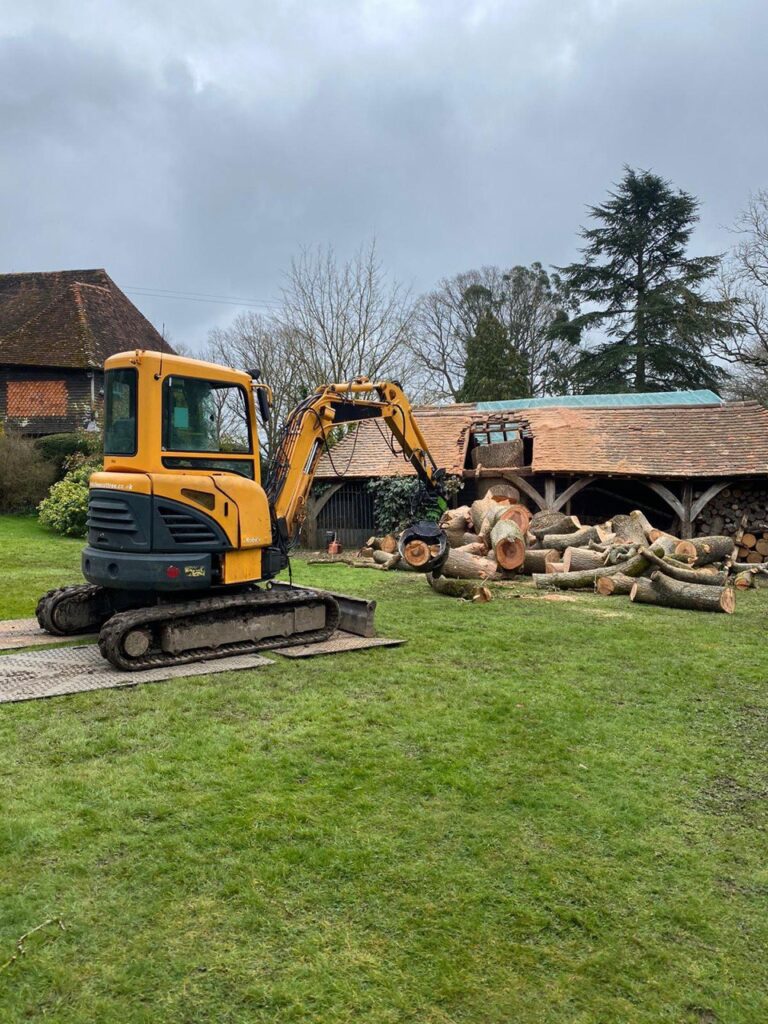Introduction
Trees are a valuable part of any landscape, offering shade, beauty, and environmental benefits. However, poorly maintained trees can become a hazard, particularly when weak or damaged limbs threaten to fall. These branches can pose risks to property, vehicles, and even personal safety.
At Whitstable Tree Surgeons, we specialise in tree care and maintenance in Whitstable, Kent. Knowing how to identify and safely remove hazardous tree limbs can prevent costly damage and ensure trees remain healthy and stable.
Signs of Hazardous Tree Limbs
1. Dead or Dying Branches
One of the most obvious signs of a dangerous tree limb is when it has no leaves during the growing season or has brittle, dry bark. Dead branches are weak and more likely to break, especially in strong winds or storms.
Look out for:
- Branches with no new growth in spring or summer
- Bark peeling away, exposing bare wood
- Limbs that snap easily under light pressure
2. Cracks and Splits in Branches
Cracks or splits in a tree limb indicate structural weakness, which can cause the branch to fall unexpectedly. This is particularly concerning for large limbs positioned over driveways, paths, or rooftops.
Signs of a weakened branch include:
- Visible splits where the limb connects to the trunk
- Large cracks running along the branch
- Sudden changes in the angle of the limb after strong winds
3. Overhanging or Unbalanced Limbs
Branches that extend too far beyond the tree’s natural canopy or grow at an unnatural angle may be at risk of breaking. The weight of these limbs, combined with wind pressure, increases the likelihood of snapping.
Check for:
- Branches leaning excessively over structures or pathways
- Limbs extending too far from the trunk without support
- Uneven growth that makes the tree appear lopsided
4. Fungal Growth and Decay
The presence of fungi, such as mushrooms or bracket fungi, on a tree limb can indicate internal decay. While the branch may look healthy from the outside, internal rot can significantly weaken its structure.
Warning signs include:
- Fungal growth near the base of the branch
- Hollow or soft wood when tapped
- A foul or musty smell from decaying wood
5. Signs of Pest Infestation
Insects and pests, such as wood-boring beetles or termites, can damage tree limbs from the inside. If you notice small holes in the bark, sawdust-like debris around the base, or increased bird activity pecking at the wood, it may indicate an infestation.
How to Safely Remove Hazardous Tree Limbs
1. Assess the Risk
Before attempting any pruning or limb removal, evaluate the risk level. If the branch is large, located near power lines, or requires climbing, it is best to contact a professional tree surgeon.
2. Use Proper Pruning Techniques
If the limb can be safely removed, follow correct pruning methods:
- Cut in stages – Large branches should be cut in sections to prevent splitting or damage to the trunk.
- Use the three-cut method – Make an initial cut on the underside, a second cut further out, and a final cut close to the trunk to minimise damage.
- Avoid cutting too close to the trunk – Leave a small collar of wood to promote healthy healing.
3. Dispose of Debris Properly
After removing the limb, ensure that the debris is cleared away. Large branches can be cut into manageable pieces for disposal, while smaller limbs can be chipped for mulch.
4. Schedule Regular Tree Inspections
Regular tree maintenance helps prevent hazardous branches from developing in the first place. Professional tree surgeons can assess the overall health of a tree and recommend necessary pruning or felling.
Why Choose Whitstable Tree Surgeons?
For homeowners in Whitstable, Kent, Whitstable Tree Surgeons offers expert tree inspection, pruning, and limb removal services. Our team ensures that trees remain safe, healthy, and well-maintained, reducing the risk of property damage and accidents.
Conclusion
Identifying and removing hazardous tree limbs before they become a problem is essential for maintaining a safe outdoor environment. By regularly checking for deadwood, cracks, overhanging branches, decay, and pest damage, homeowners can prevent accidents and costly repairs.
If you need professional tree limb removal or inspection in Whitstable, Kent, contact Whitstable Tree Surgeons today. Our expert team is ready to help with all aspects of tree care and safety.
Call us on: 01227 204594
Click here to find out more about Whitstable Tree Surgeons
Click here to complete our contact form and see how we can help with your tree needs.
